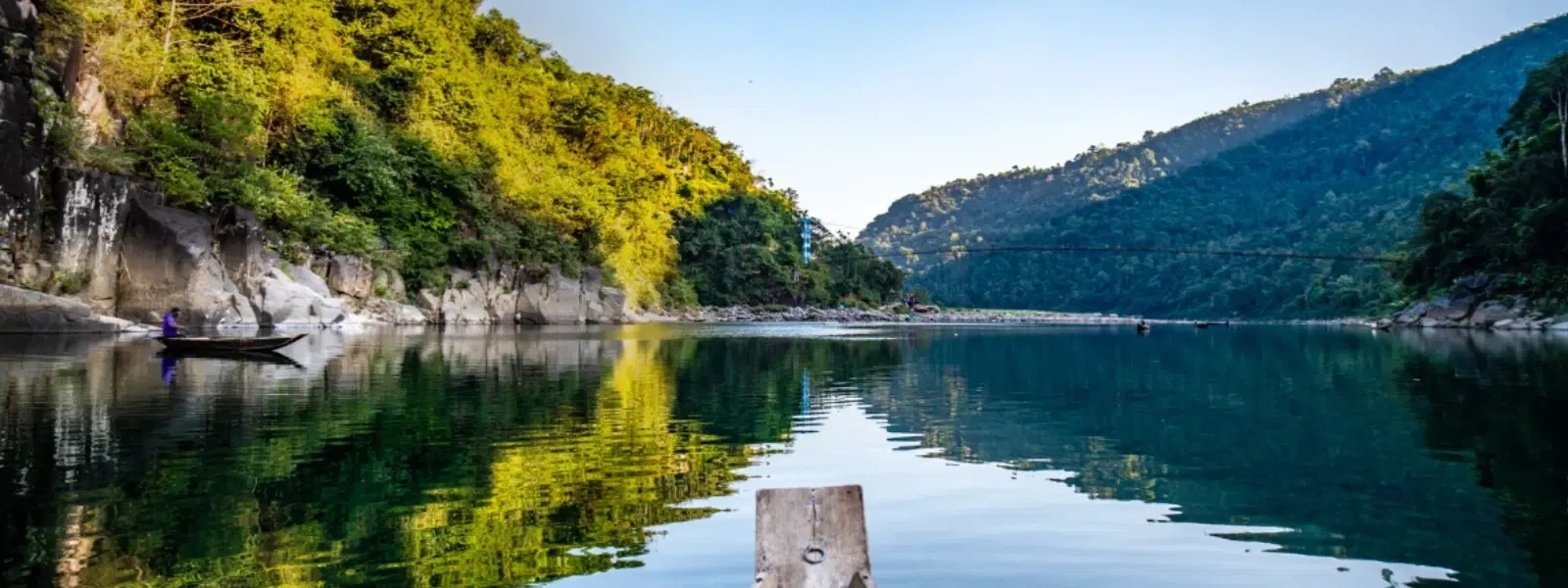
Hotels
•03 min read

Imagine a land where ancient traditions weave seamlessly into breathtaking natural landscapes. Shikoku Island, Japan’s smallest main island, offers a mesmerizing blend of nature, culture, and time-honored traditions that capture the heart of every traveler. This guide will walk you through planning an unforgettable journey to Shikoku, revealing its top attractions, hidden gems, and essential travel tips to enrich your adventure.
Shikoku is a world of its own. Its serene landscapes, steeped in rich history and cultural significance, make it a destination unlike any other. Known for its ancient temples and the revered 88-temple pilgrimage, the island offers glimpses into Japan’s spiritual heritage alongside its lush natural wonders. Whether you are exploring centuries-old shrines or immersing yourself in local traditions, Shikoku leaves a profound impression on every traveler.
This enchanting island is divided into four prefectures: Tokushima, Kagawa, Ehime, and Kochi. Each prefecture boasts its own unique charm and attractions. Reaching Shikoku is easier than you might expect. Options include ferries that connect from the mainland, scenic train journeys, and available air travel. For Indian travelers, public transportation systems such as trains and buses provide a practical solution, eliminating the need to rent a car while still allowing exploration of the island’s most remote locations.
Shikoku is brimming with must-see sites. The iconic Matsuyama Castle stands proudly, offering panoramic views of the surrounding historic cityscape. A visit to Dogo Onsen gives you a taste of traditional Japanese relaxation, while Ritsurin Garden is an ode to meticulously cultivated natural beauty. The powerful Naruto Whirlpools, created by tidal currents, provide a dynamic natural spectacle. Beyond these, venture off the beaten path to witness the rustic allure of Iya Valley’s vine bridges or the whimsical charm of Nagoro’s scarecrow village.
One of Shikoku’s treasures is the 88-temple pilgrimage, a spiritual journey that attracts individuals from across the globe seeking both physical and emotional renewal. This pilgrimage is more than a travel route—it is an immersive cultural experience. Whether choosing to walk the ancient trails or drive through parts of the route, travelers can absorb the meditative, almost mystical atmosphere that pervades these sacred sites.

For those drawn to the embrace of the ocean and rugged coastlines, Shikoku’s beaches offer a retreat into nature. Katsurahama beach welcomes visitors with its pristine sands and calming sea breezes, while the Niyodo River and Cape Ashizuri captivate with their untouched natural beauty. Each location provides a perfect backdrop for leisurely activities, from peaceful beach walks to adventurous water sports.
"Did you know? Shikoku’s 88-temple pilgrimage is one of the oldest and most revered spiritual journeys in the world, attracting travelers seeking enlightenment and adventure alike."
The cultural calendar of Shikoku is dotted with vibrant festivals and events. The Awa Odori Dance Festival brings traditional music and energetic dance into the streets, creating an atmosphere filled with joy and community spirit. Meanwhile, art enthusiasts can experience the Setouchi Triennale, an event that fuses contemporary art with the island’s historical ambiance.
No journey is complete without sampling the local cuisine. Shikoku is renowned for its signature dishes: Sanuki udon offers hearty, handcrafted noodles; Kochi’s katsuo no tataki tempts seafood lovers with its smoky flavors; and Ehime’s mikans provide a sweet, citrus burst. Food markets and local restaurants serve as hubs where travelers can savor authentic flavors and connect with the island’s culinary heritage.
Artisans of Shikoku have kept traditional crafts alive for generations. In Tokushima, the delicate art of indigo dyeing transforms fabrics into vivid works of art. Kagawa boasts exquisite lacquerware, each piece meticulously handcrafted to reflect time-honored techniques. These crafts are not just souvenirs—they are windows into the island’s enduring artistic legacy.

Nature lovers will find endless adventures on Shikoku Island. The hiking trails here range from gentle paths to challenging treks, with Mount Tsurugi and the scenic trails of Iya Valley standing out as top choices. Beyond hiking, activities such as kayaking, cycling, and exploring hidden waterfalls beckon the adventurous spirit, providing immersive experiences in Shikoku nature and culture.
Responsible travel is central to experiencing Shikoku in its most authentic form. Travelers can opt to stay in traditional ryokans that honor local customs, partake in community-led conservation projects, and enjoy eco-friendly travel options. This approach not only preserves the island’s natural charm but also enriches your journey with deeper connections to local life.
Shikoku is renowned for its 88-temple pilgrimage, stunning natural landscapes, rich cultural heritage, and delicious local cuisine such as Sanuki udon.
Absolutely! Shikoku uniquely blends natural beauty, cultural depth, and authentic experiences, making it an ideal destination for travelers seeking something different.
Yes, the island is well-connected by public transportation, including trains, buses, and ferries. However, renting a car can offer flexibility for exploring remote areas.
Shikoku is the smallest of Japan’s four major islands, yet it is abundant with attractions and cultural experiences.
Shikoku Island captivates with its unparalleled mix of natural splendor, ancient cultural traditions, and a welcoming spirit that lingers long after you leave. Whether drawn by its scenic landscapes, the spiritual journey of the 88-temple pilgrimage, or the rich culinary and artistic heritage, Shikoku offers every traveler a unique and enriching experience. This guide is designed to equip you with the essential knowledge to start planning your journey, ensuring a smooth and inspiring adventure to one of Japan’s most treasured destinations.